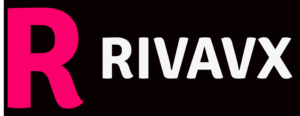In the dynamic realm of project management, where efficiency is the backbone for success, 85% of project managers handle multiple projects concurrently. This underscores the need for streamlined processes, seamless collaboration, and effective time management.
In this blog post, we will delve into the strategic amalgamation of working hours trackers with project management tools—a synergy that not only enhances transparency and accountability but also elevates the overall efficiency of project teams.
The Need for Integration
In a world where time is money, project managers are consistently seeking innovative ways to optimize workflows. Integration of a working hours tracker with project management tools provides teams with a solution to one of their core challenges: monitoring time spent on various project tasks.
Traditional methods, like manual timesheets, can be time-consuming and error-prone. By integrating a dedicated working hours tracker into the project management ecosystem, organizations can modernize their time management practices and unlock a spectrum of benefits.
Selecting the Right Tools
Initiating the integration process begins with the meticulous selection of suitable tools. Project managers must evaluate the distinct requirements of their teams and opt for a working hours tracker that seamlessly meshes with their chosen project management tool. Various working hours tracking solutions provide versatile features and user-friendly interfaces.
Similarly, different project management tools are recognized for their collaborative functionalities. Achieving a seamless integration entails strategically pairing these tools to guarantee a fluid exchange of data between them.
Setting Up the Integration
Once the tools are selected, the next phase involves the setup of the integration. Most project management tools today offer robust integration capabilities, often facilitated through third-party applications or built-in features.
Typically, the setup process involves authorizing the connection between the working hours tracker and the project management tool, configuring settings, and ensuring that the data synchronization is seamless. While the specific steps may vary based on the chosen tools, most integrations follow a straightforward process that can be completed with minimal technical expertise.
Real-Time Insights for Enhanced Decision-Making
One of the primary advantages of integrating a working hours tracker with project management tools is the ability to access real-time insights into team activities.
Project managers obtain a detailed insight into team time allocation, revolutionizing decision-making on resource allocation, task prioritization, and project timelines. Accurate, timely information empowers managers to steer projects effectively, identifying and addressing bottlenecks promptly.
Precision in Project Timeline Management
Accurate project timelines are the backbone of successful project management. The integration of a working hours tracker contributes to precise timeline management by offering detailed insights into task durations and completion rates.
This data allows project managers to identify patterns, forecast future timelines more accurately, and allocate resources with greater precision. As a result, the risk of projects falling behind schedule is significantly reduced, and teams can consistently meet deadlines, earning the trust and confidence of stakeholders.
Efficient Resource Allocation and Workload Management
Beyond project timelines, the integration provides a holistic view of team members’ workloads. Project managers can monitor the distribution of tasks across the team, ensuring an equitable allocation of responsibilities.
This level of insight is instrumental in preventing burnout and optimizing productivity. By understanding each team member’s capacity and workload, project managers can make more informed decisions when assigning new tasks or redistributing existing ones.
Accurate Cost Estimation and Budgeting
Effective project management goes hand in hand with accurate cost estimation. The integration of a working hours tracker with project management tools facilitates the calculation of more precise project costs.
By having real-time data on the time invested in each task, project managers can create more accurate budgets, reducing the risk of cost overruns. Clients and stakeholders benefit from this transparency, appreciating the accountability that comes with precise cost estimations. This, in turn, strengthens client relationships and builds a reputation for reliability and professionalism.
Transparent Client Communication
Client communication is a cornerstone of successful project management. Clients often seek updates on project progress, and the integration provides project managers with the tools to deliver transparent and accurate information.
Real-time data allows for detailed and timely reporting, keeping clients informed about milestones, task completion rates, and any potential challenges. This transparency builds trust and fosters collaboration, enhancing client satisfaction and setting the stage for successful long-term partnerships.
Continuous Monitoring and Optimization
The integration of a working hours tracker with project management tools is not a one-time implementation; it requires ongoing monitoring and optimization. Regular reviews of the data generated by both tools enable project managers to identify areas for improvement and fine-tune their processes.
Staying informed about updates and new features from the working hours tracker and project management tool ensures that the integration remains seamless and up-to-date. A proactive approach to monitoring and optimization ensures that the benefits of integration continue to evolve and adapt to the changing needs of the project and team.
Final Thoughts
The integration of a working hours tracker with project management tools is a strategic investment for organizations seeking to optimize their project management processes. This synergy delivers a multitude of benefits, including enhanced transparency, accurate project timelines, efficient resource allocation, precise cost estimation, and transparent client communication.
As the workplace landscape evolves, leveraging the power of integrated tools becomes increasingly crucial for staying competitive and achieving project success. By embracing this synergy, project managers can propel their teams to new heights of productivity, efficiency, and success.



